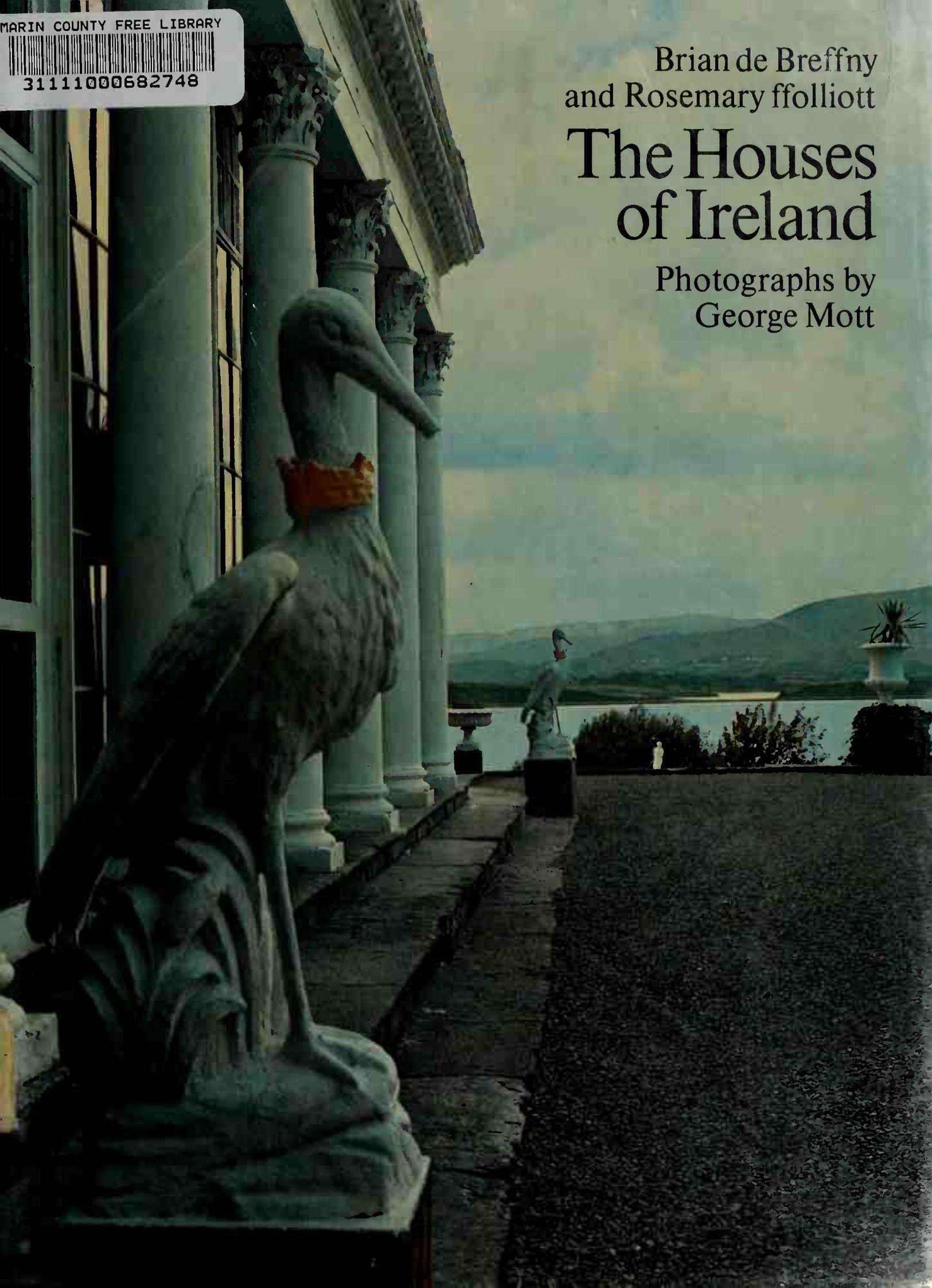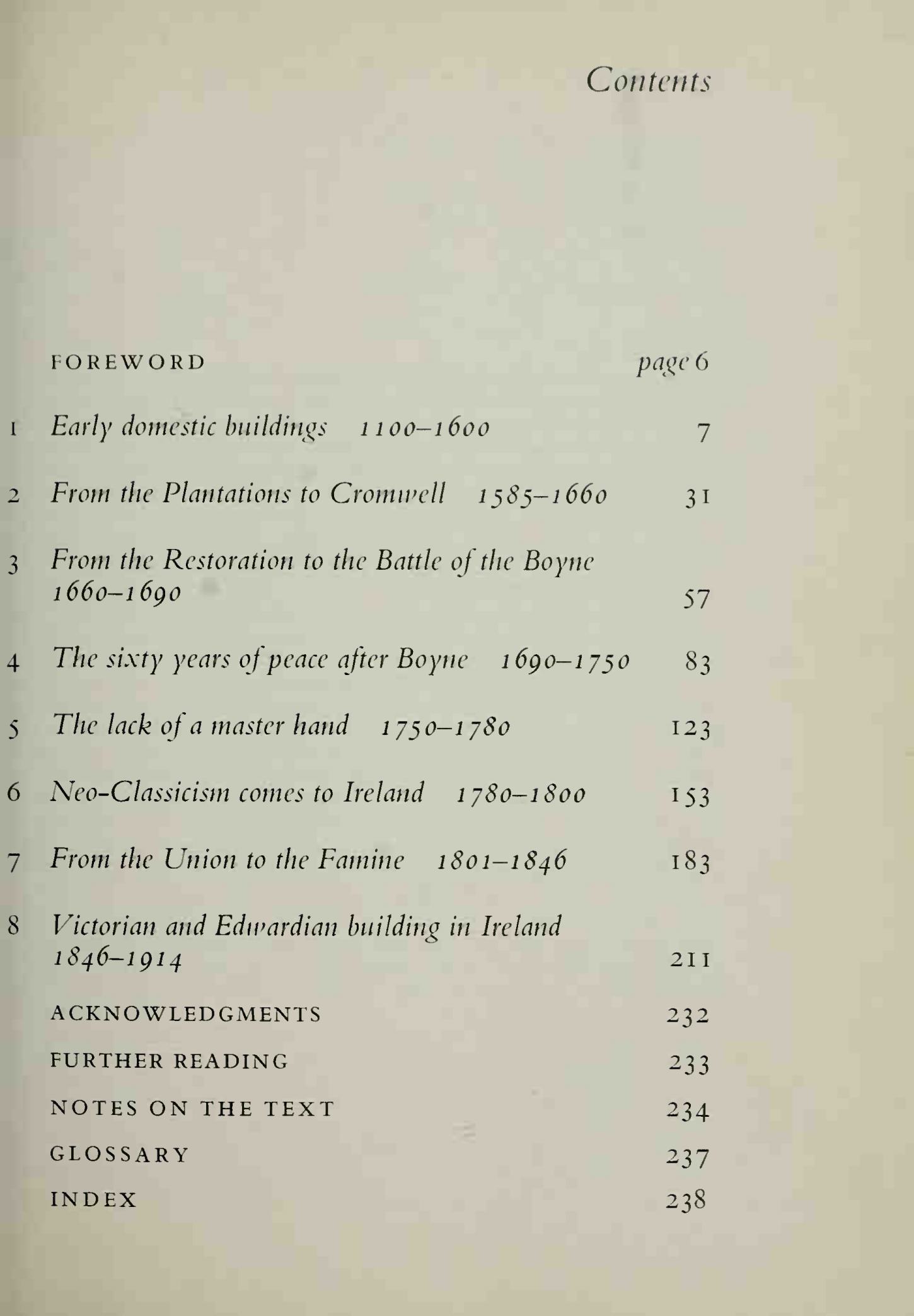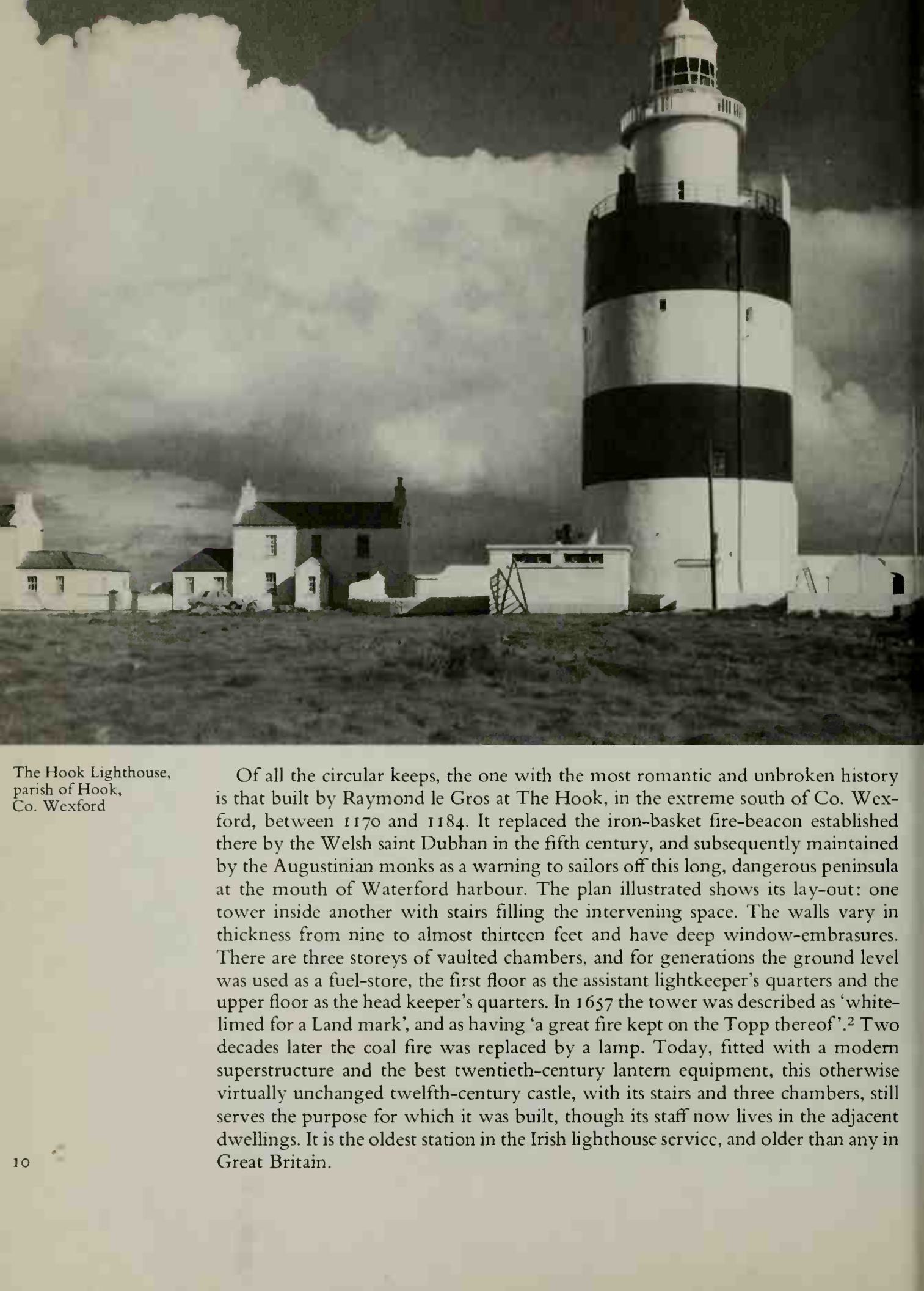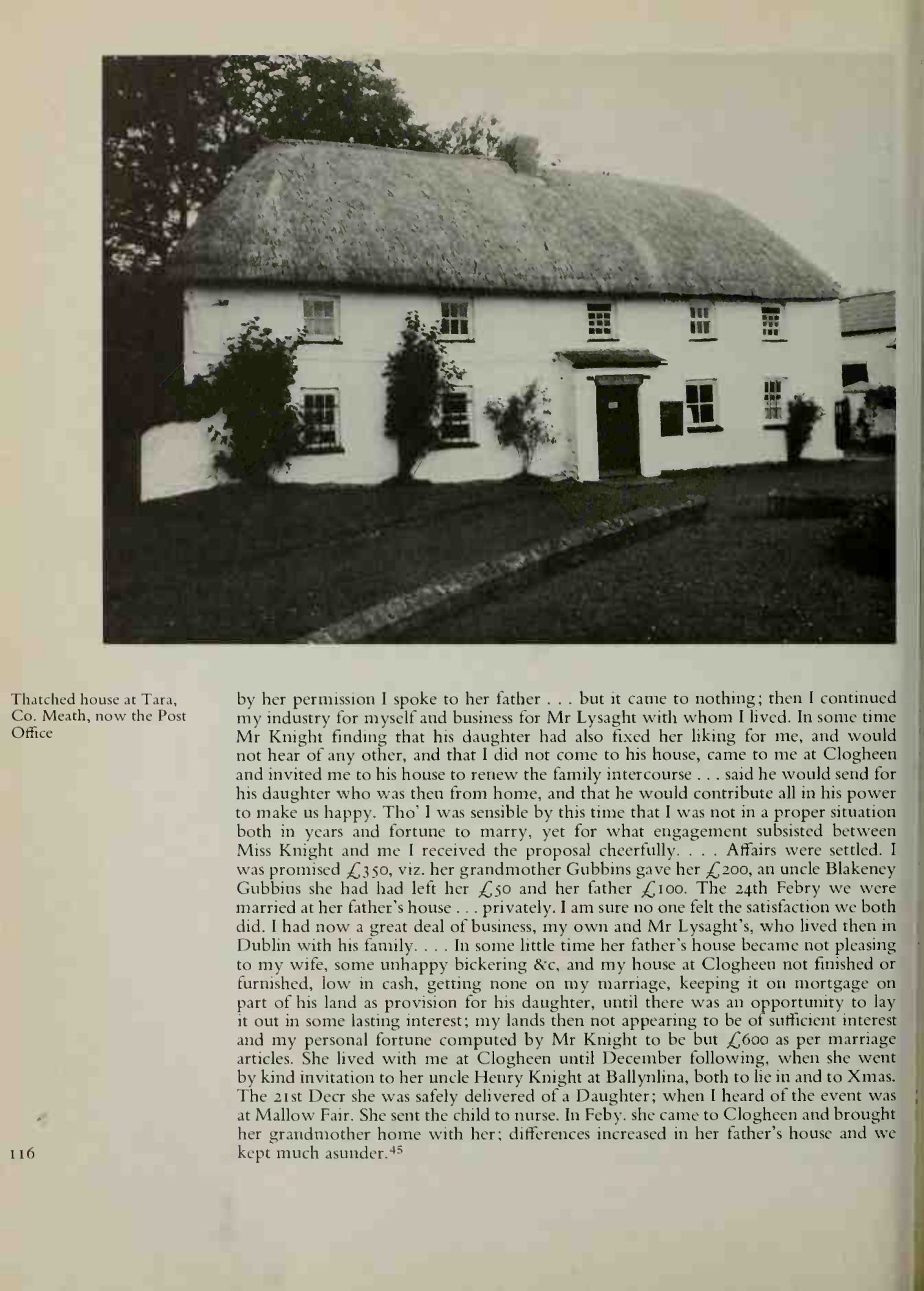|
|
Brian de Breffny and Rosemary ffolliott. The Houses of Ireland : Domestic architecture from the medieval castle to the Edwardian villa. — New York, 1975  The Houses of Ireland : Domestic architecture from the medieval castle to the Edwardian villa / Brian de Breffny and Rosemary ffolliott ; Photographs by George Mott. — New York : The Viking Press, 1975. — 240 p., ill. — ISBN 670–38102–0
In this comprehensive survey of Irish domestic architecture from the twelfth century through 1914, dwellings of every kind are discussed and illustrated: castles, tower houses (a characteristically Irish type), country mansions, town houses, bishops’ palaces, almshouses, farmers’ dwellings, cottages, and thatched cabins. The treatment, which includes town planning, is chronological, and the successive architectural phases are related to the historical, social, and economic factors which helped to shape them. Thus the sixteenth-century plantations, the aftermath of the Battle of the Boyne and the institution of the Penal Laws, and the rise of the newly rich Protestant settlers during the eighteenth century are shown to have affected both the purposes and the styles of Irish buildings. The authors provide a wealth of detail (drawn from such sources as builders’ tenders and owners’ accounts and inventories) concerning the construction, materials, costs, interior and exterior decorations, and furnishings of the houses, as well as fascinating anecdotes about the lives of the occupants and the concerns of the architects. The photographs have nearly all been taken especially for this book and, wherever possible, they show the buildings in their original, unaltered states.
Foreword
This book is neither an exhaustive encyclopedia of Irish domestic architecture nor a catalogue of Irish houses, and we wish to stress that the houses illustrated or mentioned in the text are our personal selection. The process of elimination, made in joint consultation, was often difficult, sometimes agonizing. We agreed that one of our main criteria in selecting houses to photograph for illustration must be, as far as possible, an unaltered appearance so that the reader would get the best possible idea of what the house originally looked like. This is the reason why we have not shown more interiors. So far as mentioning houses was concerned, we quickly realized that it would be easy to produce a book this size on each one of our eight chapter periods. Therefore we concentrated on houses still in existence and leave it to others to revive the many interesting, vanished buildings. Even so, some beautiful and even important houses have had to be omitted or only barely mentioned. Here our choice for inclusion has generally been in favour of houses that have not recently been documented in other publications. Together we have made an effort to reach a compromise, treating a fair cross-section that is representative of the development of domestic architecture in Ireland at all levels over several centuries. The history of a house should not be separated from that of the people who built and lived in it, and thus domestic architecture cannot be divorced from family history, social history or political events. Dates of marriage, of inheritance or of local troubles, for example, have a vital bearing on dates of building and rebuilding. Within the restrictions of our space we have tried to place the houses against their contemporary backgrounds.
Rome—Dublin
BREFFNY
ROSEMARY FFOLLIOTT
GEORGE MOTT
Contents
FOREWORD 6
1 Early domestic buildings 1100–1600 7
2 From the Plantations to Cromwell 1585–1660 31
3 From the Restoration to the Battle of the Boyne 1660–1690 57
4 The sixty years of peace after Boyne 1690–1750 83
5 The lack of a master hand 1750–1780 123
6 Neo–Classicism comes to Ireland 1780–1800 153
7 From the Union to the Famine 1801–1846 183
8 Victorian and Edwardian building in Ireland 1846–1914 211
ACKNOWLEDGMENTS 232
FURTHER READING 233
NOTES ON THE TEXT 234
GLOSSARY 237
INDEX 238
Sample pages 
Download link (pdf, yandexdisk; 31,2 MB).
The electronic version of this issue is published only for scientific, educational or cultural purposes under the terms of fair use. Any commercial use is prohibited. If you have any claims about copyright, please send a letter to 42@tehne.com.
4 апреля 2021, 23:32
0 комментариев
|
Партнёры
|






Комментарии
Добавить комментарий